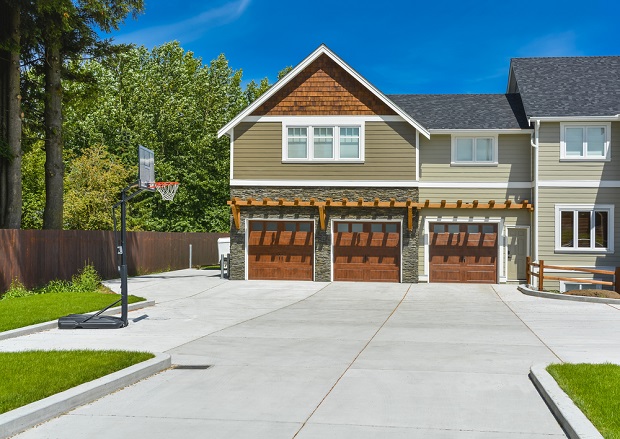If you’re wondering when your driveway needs a Columbia concrete repair maintenance service, there are several signs that you should look for. These include discoloration, potholes, and crumbling edges. Read on to find out what you should do if these signs occur. You might even want to consider resurfacing the driveway, depending on the extent of the damage. Here are a few other signs to keep an eye out for:
Crumbling edges
It may be that the edges of your driveway have started to crumble. In that case, you may need to call a Columbia concrete repair maintenance company. This condition is called “spalling” and happens when too much water seeps into the concrete. The cause of spalling may be improper water mixing and the freeze-thaw cycle in your area. It is possible to fix the edges of your driveway by applying a concrete cleaner.
Small cracks in your driveway result from shrinkage as your driveway cures. They are not a sign of a more significant problem, but a warning sign. If cracks appear shortly after your driveway is poured, water can seep into it and cause the cracks to grow. You can use a solvent-based concrete crack sealant to make these cracks disappear and keep your driveway looking great.
Potholes
If your driveway has potholes, they are an immediate safety hazard for you and your vehicle. Although drivers can’t do much to prevent potholes from appearing on city streets, they can do their part by filling them in immediately. However, if you have potholes in your driveway, you should act quickly to fix them. The following are some easy tips to fix potholes in driveways.
First, make sure to remove any debris. Then, use a shovel to cut off loose edges to make repairs more manageable. When filling potholes, use the correct mix for the specific size of the hole. If the gap is deeper than the asphalt layer, you should fill it with sand, gravel, or dirt. Filling a more significant pothole than this will cause it to grow even more profound.
Discoloration
A clear indication of a damaged driveway is a discoloration that appears on it after it has been neglected. This discoloration can be caused by several factors, including improper drainage and poor installation. Impressions and holes in the concrete can cause standing water and weaken the foundation. A cracked or badly-installed driveway can also become a breeding ground for mold and algae. The best way to avoid costly repairs is to clean the area thoroughly.
Concrete driveways should last for the life of a property. However, cracks in the surface can result from inadequately compacted subgrades, exposure to extreme weather, and an improper concrete mix. Cracks in a driveway usually begin small and can be easily repaired. Ensure that the cracks are less than 3mm wide. The area should be inspected for cracks if they are more significant than 3 mm. Checking the width of the driveway should be the most critical aspect when inspecting its condition. If the cracks extend beyond a few centimeters, it may require cutting the concrete.
Water pooling
Water pooling on your driveway means you don’t have a proper drainage system. It can cause many issues, including flooding and damp problems. Damp walls are not only unsightly but can be unhealthy as well. Here are some ways to fix the problem:
- Ensure that your driveway is straight and free of puddles.
- Install gutters where water can run off.
- Check your septic system for clogged drains if your driveway is curved.
If the problem is persistent, consider digging a drainage channel. Digging a trench will help move the water away from the area. However, you need to begin the digging at the lowest point to avoid disturbing the water in the room. If you don’t have a drainage system, consider installing a soakaway. Water will flow away from your driveway through this solution. Then, after you fix the problem, it’s time to enjoy your newly-found driveway!
Cracks
Cracks in driveways often indicate that your slab needs repair or replacement. Cracks that are wide and jagged may require a complete slab replacement. Uneven cracks may indicate a structural problem that requires refinishing. If the cracks are too large, it may be necessary to replace the slab altogether. A damaged driveway can also become a safety risk and must be replaced to protect your home and property.
Cracks in the edge of your driveway are usually caused by heavy vehicles but can be repaired by applying Quikrete Quick-Setting Cement mixed with Acrylic Fortifier to the area. First, clean the rim and apply the two products, then wait a few hours. Overlapping is another method that can be used to fix cracked edges. This repair material can reform broken edges of the concrete driveway.
Unevenness
An uneven driveway is a significant problem, as it can lead to the sinking of the concrete. When this happens, the concrete slab becomes uneven and looks like a staircase. It is standard for a concrete slab to sink into the ground, but this is an issue you can’t just fix – you must also repair the cause. In addition, an uneven driveway can cause damage to other parts of your property, including your neighbor’s driveway, which is likely to be on the same soil as yours.
Unevenness in your driveway may indicate that the sidewalks are prone to sinking and causing puddles. In addition, the sitting water can be dangerous, as it may cause people to slip and fall. A professional can recommend a solution for your driveway and sidewalk problems.

